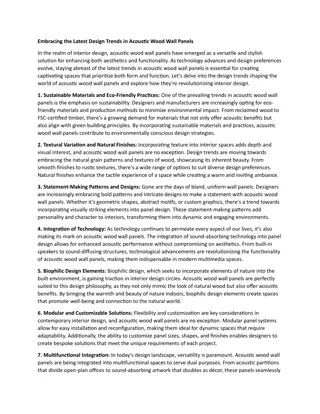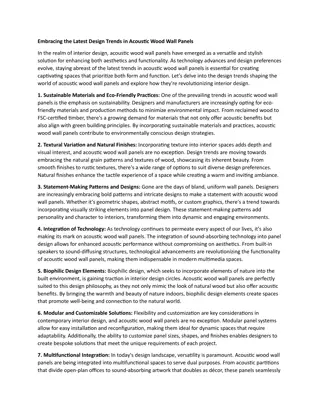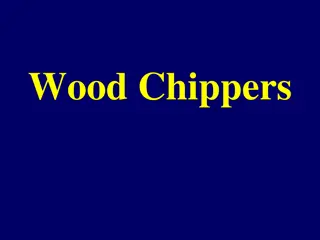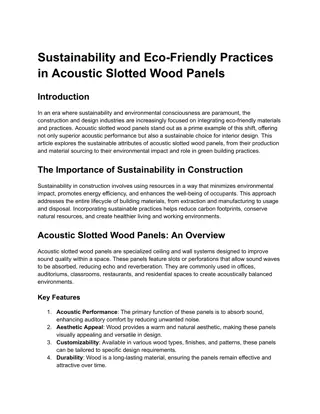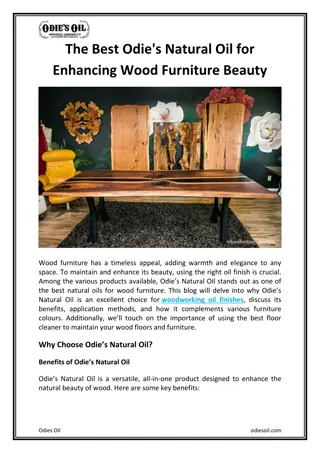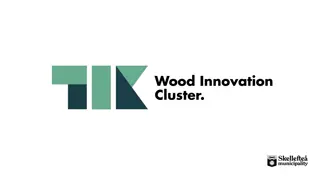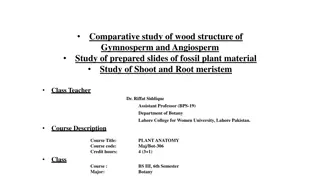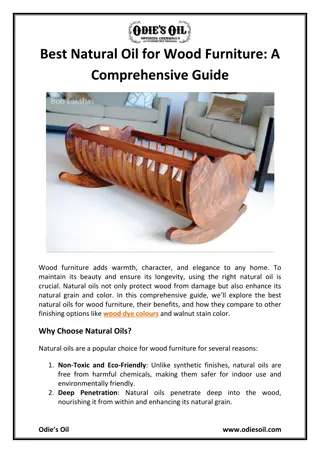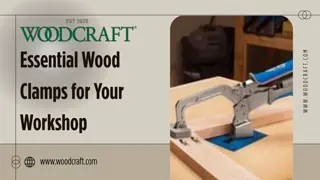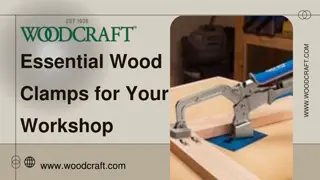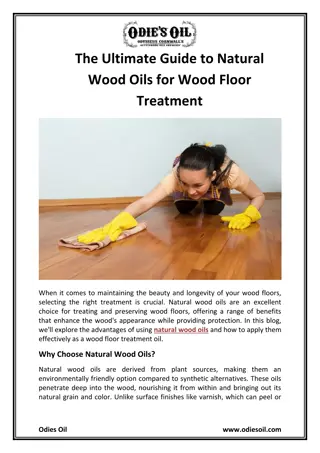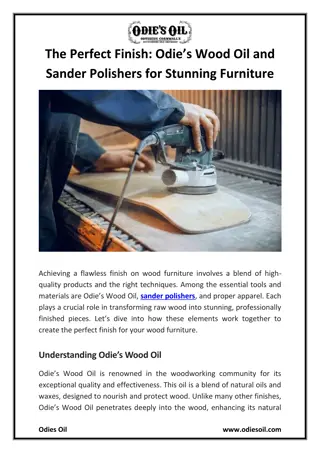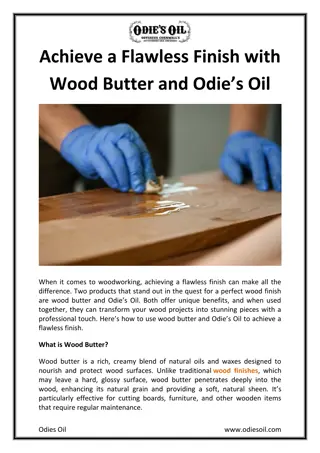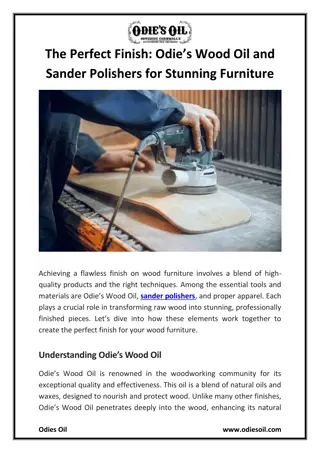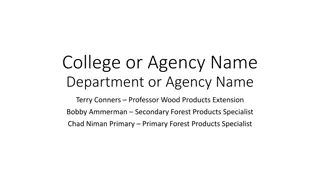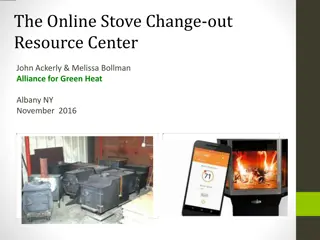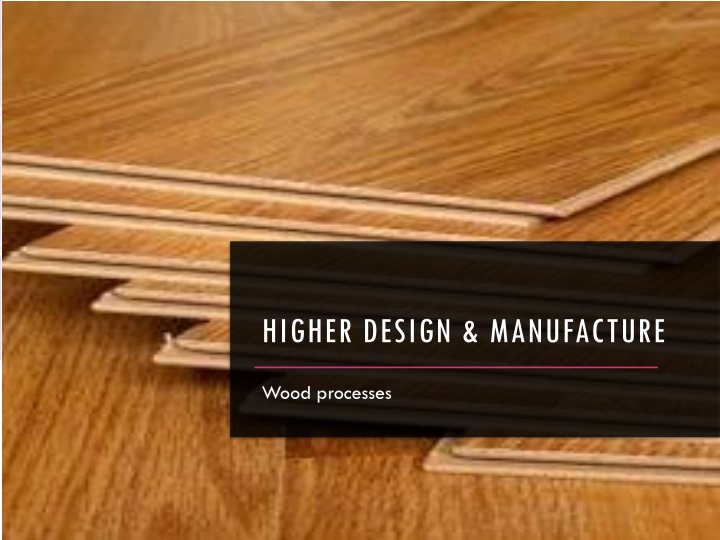
Wood Manufacturing Processes: Laminating, Routing, Spindle Moulding
Explore various wood manufacturing processes including laminating, routing, and spindle moulding. Learn about the advantages, disadvantages, and applications of each technique to enhance your understanding of woodworking practices.
Uploaded on | 0 Views
Download Presentation

Please find below an Image/Link to download the presentation.
The content on the website is provided AS IS for your information and personal use only. It may not be sold, licensed, or shared on other websites without obtaining consent from the author. If you encounter any issues during the download, it is possible that the publisher has removed the file from their server.
You are allowed to download the files provided on this website for personal or commercial use, subject to the condition that they are used lawfully. All files are the property of their respective owners.
The content on the website is provided AS IS for your information and personal use only. It may not be sold, licensed, or shared on other websites without obtaining consent from the author.
E N D
Presentation Transcript
HIGHER DESIGN & MANUFACTURE Wood processes
LEARNING INTENTIONS & SUCCESS CRITERIA Learning Intentions To develop an understanding of the properties and uses of Wood in everyday objects. Success Criteria I can name 3 common wood processes. Give examples of there possible uses.
Here are a few common processes you need to know about: WOOD Laminating PROCESSES Routing/Spindle Mould Turning
Laminating (sometimes called glulam) is the process of gluing strips of wood together to form large sections Can be used to build furniture or building structures Can be used for most natural timbers and some manmade board such as chipboard LAMINATING
Advantages: Allows for much larger timber sections to be created than grow naturally Cross section can be varied, allowing thicker parts where more strength is required LAMINATING Disadvantages: Can be very time-consuming to manufacture
Process Sections of timber are cut out and glued edge-to-edge PVA glue is most commonly used Fast-setting adhesives can be used in industrial scale production Glued sections are then cramped together until the glue dries Sections can then be cut to shape For curved shapes, a former must be used Components are usually made longer than required and later trimmed LAMINATING Video: https://www.youtube.com/watch?v=TK_v01nq WTc
Uses a cutter which rotates at high speed to cut grooves or edge details in timber or manmade boards Cutters can have different profiles to cut different grooves or edge styles ROUTING & SPINDLE MOULD ROUTER: the work piece is fixed and the cutter moves SPINDLE MOUND: this is fixed in place and the work piece is passed across the cutter (used for long straight work pieces) Videos: CNC Router: https://www.youtube.com/watch?v=vS3yILFOqAM Spindle Mould: https://www.youtube.com/watch?v=z8m57FtK47w
Used to manufacture item by spinning wooden blanks on a lathe The blank is then shaped using a variety of tools to produce items with an axis of rotational symmetry Products include: Vases Banisters Spindles Handles Bowls Chess pieces TURNING
Hardwoods give a better result and finish than softwoods Irregular grain structure of hardwoods makes more interesting and aesthetically pleasing patterns More intricate shapes can be made due to hardwood density Examples of common woods used are: Beech Elm Yew Ash TURNING Videos: https://www.youtube.com/watch?v=Nckqhfx abvs
PAST PAPER QUESTION
PAST PAPER ANSWERS

